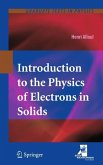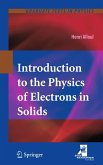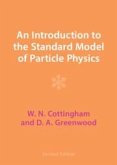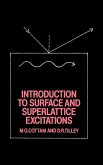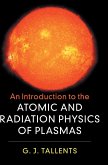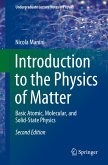This book aims to introduce the reader to the behaviour of electrons in solids, starting with the simplest possible model, and introducing higher-level models only when the simple model is inadequate. Unlike other solid state physics texts, this book does not begin with complex crystallography, but instead builds up from the simplest possible model of a free electron in a box. The approach is to introduce the subject through its historical development, and to show how quantum mechanics is necessary for an understanding of the properties of electrons in solids. It does not treat the dynamics of the crystal lattice, but proceeds to examine the consequences of collective behaviour in the phenomena of magnetism and superconductivity. Throughout the mathematics is straightforward and uses standard notation. This text is suitable for a second or third year undergraduate course in physics, and would also be suitable for an introductory solid state course in materials science or materials chemistry.
Table of contents:
Preface; Acknowledgements; 1. The classical free electron model; 2. Quantum mechanical free electron model; 3. Application of the Fermi gas model; 4. Energy bands; 5. Experimental evidence for band structure and effective mass; 6. Electrical conduction in semiconductors and insulators; 7. Semiconductor devices; 8. Localized electrons; 9. Magnetism; 10. Superconductivity; Appendices; Index.
Hinweis: Dieser Artikel kann nur an eine deutsche Lieferadresse ausgeliefert werden.
Table of contents:
Preface; Acknowledgements; 1. The classical free electron model; 2. Quantum mechanical free electron model; 3. Application of the Fermi gas model; 4. Energy bands; 5. Experimental evidence for band structure and effective mass; 6. Electrical conduction in semiconductors and insulators; 7. Semiconductor devices; 8. Localized electrons; 9. Magnetism; 10. Superconductivity; Appendices; Index.
Hinweis: Dieser Artikel kann nur an eine deutsche Lieferadresse ausgeliefert werden.


